
Frederick Arthur Round Emney was an English character actor and comedian.

Der lila Domino is an operetta in three acts composed by Charles Cuvillier. The original German libretto is by Emmerich von Gatti and Bela Jenbach, about a gambling count who falls in love at a masquerade ball with a noblewoman wearing a lilac domino mask.
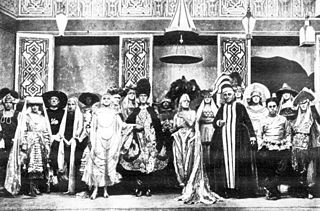
Charles Cuvillier was a French composer of operetta. He won his greatest successes with the operettas La reine s'amuse and with The Lilac Domino, which became a hit in 1918 in London.
Kelville Ernest Irving was an English music director, conductor and composer, primarily remembered as a theatre musician in London between the wars, and for his key contributions to British film music as music director at Ealing Studios from the 1930s to the 1950s.
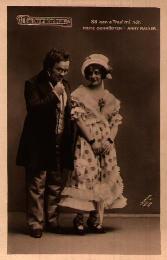
Das Dreimäderlhaus, adapted into English-language versions as Blossom Time and Lilac Time, is a Viennese pastiche operetta with music by Franz Schubert, rearranged by Heinrich Berté (1857–1924), and a libretto by Alfred Maria Willner and Heinz Reichert. The work gives a fictionalized account of Schubert's romantic life, and the story was adapted from the 1912 novel Schwammerl by Rudolf Hans Bartsch (1873–1952). Originally the score was mostly Berté, with just one piece of Schubert's, but the producers required Berté to discard his score and create a pasticcio of Schubert music.

Die geschiedene Frau, is an operetta in three acts by Leo Fall with a libretto by Victor Léon based on Victorien Sardou's Divorçons!. Conducted by the composer, It opened to considerable success at the Carltheater in Vienna on 23 December 1908 with Hubert Marischka as Karel.
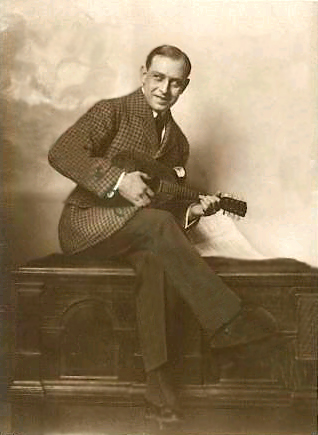
Frederic Zelnik was an Austrian producer, director, and actor. He was one of the most important producers-directors of the German silent cinema. Zelnik achieved success through period operetta films in the 1920s and 1930s.

Ralph du Vergier Truman was an English actor, usually cast as either a villain or an authority figure. He possessed a distinguished speaking voice. He was born in London, England.
Land Without Music is a 1936 British comedy film directed by Walter Forde and starring Richard Tauber, Diana Napier and Jimmy Durante. It was made at Denham Studios. The film was one of a number of operetta films made in Britain during the decade.
Mark Daly was a British film actor.
Just like a Woman is a 1939 British comedy film directed by Paul L. Stein and starring Felix Aylmer, Jeanne de Casalis and Fred Emney. It was made at Associated British Studios, Elstree.
Yes, Madam? is a 1938 British musical comedy film directed by Norman Lee and starring Bobby Howes, Diana Churchill and Wylie Watson.

Let the People Sing is a 1942 British comedy film directed by John Baxter, and starring Alastair Sim, Fred Emney and Edward Rigby. The film's sets were designed by R. Holmes Paul. It was made at Elstree Studios.

Hold My Hand is a 1938 British musical comedy film directed by Thornton Freeland and starring Stanley Lupino, Fred Emney and Barbara Blair. It was based on a musical play by Lupino.

Let's Make a Night of It is a 1937 British musical comedy film directed by Graham Cutts and starring Charles "Buddy" Rogers, June Clyde and Claire Luce. The screenplay concerns a husband and his wife, who acquire rival nightclubs at the same time. It was based on the play The Silver Spoon by Henrik Ege. It was distributed in America by Universal Pictures the following year.
Operetta films are a genre of musical films associated with, but not exclusive to, German language cinema. The genre began in the late 1920s, but its roots stretch back into the tradition of nineteenth century Viennese operettas.

Ball at Savoy is a 1936 British operetta film directed by Victor Hanbury and starring Conrad Nagel, Marta Labarr and Fred Conyngham. The film is based on the 1932 operetta Ball im Savoy by Paul Abraham, which had been turned into an Austrian film in 1935. It was made at Elstree Studios.
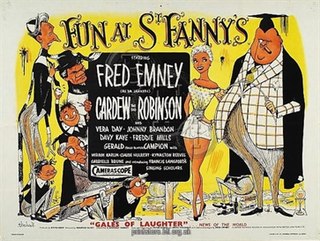
Fun at St. Fanny's is a 1955 British comedy film directed by Maurice Elvey and starring Fred Emney, Cardew Robinson and Vera Day. The film revolves around the teachers and students at St Fanny's private school. It was based on Robinson's "Cardew the Cad" character which he created in 1942 and was featured in the BBC's Variety Bandbox programme.
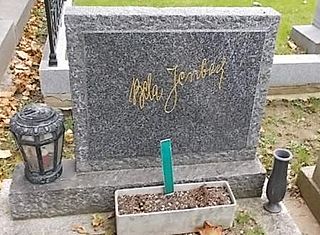
Bela Jenbach, real name Béla Jacobowicz was an Austrian actor and operetta librettist of Hungarian origin.
Howard Ellis Carr was a British composer and conductor who also spent some of his working career in Australia. He was best known for his theatre, operetta and light orchestral genre music.













